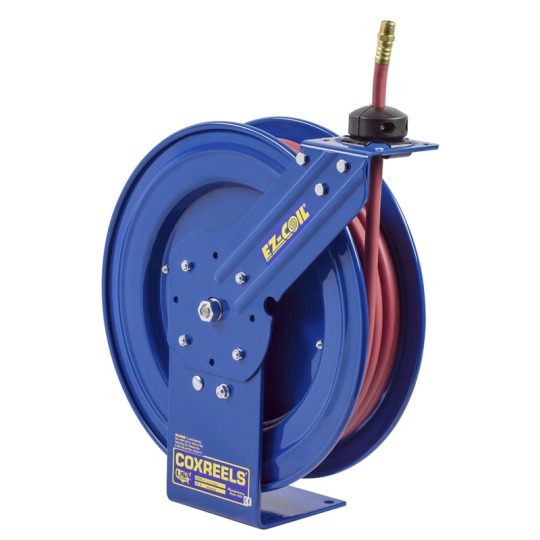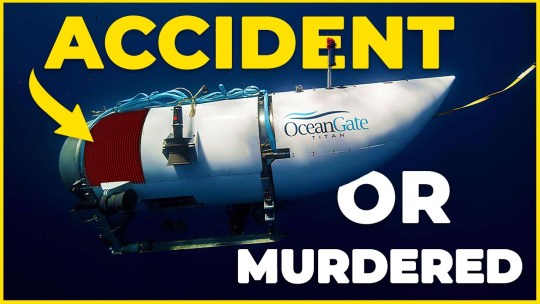#safetyprotocol
Text
Learn how gap analysis empowers the oil and gas industry to proactively manage safety beyond regulatory compliance. Discover its systematic approach to identifying safety risks, prioritizing improvement efforts, and fostering continuous improvement for enhanced operational efficiency and employee well-being.
#vegasconsulting#gapanalysis#apistandards#apicompliance#apicertification#apispecq1#apispecq2#apimonogram#regulatorycompliance#safetymanagement#riskmanagement#rootcauseanalysis#operationalefficiency#safetyprotocol#safetyexcellence#quality#qualitymanagementsystem
0 notes
Text
How to Reset a Fire Alarm Pull Station?
Fire alarm pull stations are crucial components of any fire protection system, serving as manual initiation points that allow individuals to quickly and easily alert others in the event of a fire or emergency. However, it's not uncommon for these pull stations to be accidentally activated, resulting in a need for reset. Knowing how to reset a fire alarm pull station is essential for maintaining a safe environment while avoiding unnecessary disruptions. Here's a step-by-step guide to help you navigate the process.
1. Assess the Situation:
Before attempting to reset a fire alarm pull station, it's crucial to ensure that there is no actual emergency. Assess the surroundings and confirm that there is no visible smoke, fire, or other signs of danger.
2. Locate the Fire Alarm Panel:
Identify the main fire alarm control panel. This is usually located in a centralized area within the building, such as near the building entrance or in a utility room. The control panel is the hub that monitors and controls all connected devices, including pull stations.
3. Access the Control Panel:
Open the control panel using the appropriate key or access code. If you are unsure how to access the panel, refer to the manufacturer's instructions or contact the building management.
4. Identify the Activated Zone:
Once inside the control panel, identify the zone or circuit where the pull station was activated. The panel typically displays information about the specific location of the activated device.
5. Acknowledge the Alarm:
Many fire alarm panels have a dedicated button or option to acknowledge alarms. Press this button to acknowledge the alarm condition associated with the activated pull station.
6. Silence the Alarm:
If the fire alarm system is still sounding an audible alarm, use the panel to silence it. Keep in mind that silencing the alarm does not necessarily reset the pull station; it merely stops the audible alert.
7. Reset the Pull Station:
Locate the reset mechanism on the fire alarm pull station itself. This is often a key-operated switch or a push-in button. Insert the key or press the reset button and hold it until the system acknowledges the reset.
8. Monitor the System:
After resetting the pull station, monitor the fire alarm panel for any indications of a restored normal condition. Ensure that the system is no longer in alarm mode and that all zones are clear.
9. Document the Incident:
Maintain a log or documentation of the incident, noting the date, time, and location of the pull station activation. This record can be valuable for future reference and analysis.
10. Perform System Testing:
Conduct routine testing of the fire alarm system, including the pull stations, to ensure that all components are functioning correctly. Regular testing helps identify potential issues before they become critical.
Understanding how to reset a fire alarm pull station is an essential skill for building occupants, facility managers, and maintenance personnel. While the specific steps may vary based on the type and model of the fire alarm system in place, this general guide provides a foundational overview. If you encounter challenges or have concerns about the fire alarm system, it is recommended to consult with a qualified fire protection professional or contact the system's service provider for assistance. In this case Fire Alarm Houston would be your good choice. Prioritizing the proper maintenance and operation of fire alarm systems contributes significantly to the overall safety of a building and its occupants.
#FireSafety#EmergencyPreparedness#PullStationReset#SafetyFirst#FireAlarmProcedures#BuildingSecurity#SafetyAwareness#FireDrill#AlarmReset#OccupantTraining#FacilityManagement#SafetyProtocol#FirePrevention#SecurityGuidelines#SystemMaintenance#BuildingSafety#EmergencyResponse#FireAlarmReset#SafeEnvironment#StayInformed#PullStationProcedure#LifeSafety#SecurityEducation#AlarmMaintenance#EmergencyProcedures
0 notes
Text

Weathering the Elements: Scaffolding Best Practices in Extreme Conditions
Weathering the elements while using scaffolding requires adherence to best practices, especially in extreme conditions. High winds, rain, snow, and extreme temperatures can pose significant risks to scaffolding structures and workers' safety. Proper planning, inspection, and maintenance are essential to ensure the stability and integrity of the scaffold.
#ScaffoldingSafety#ExtremeWeather#ConstructionSafety#WorkerProtection#BestPractices#SafetyProtocols#WeatherproofingScaffolds#RiskMitigation#WorksiteSafety#StructuralIntegrity
0 notes
Text
Open coil heaters, also known as resistance wire heaters, are a type of electric heating element commonly used in various industrial and commercial applications. Their simple yet efficient design makes them a popular choice for processes requiring direct and intense heat. This blog will provide an in-depth look at open coil heaters, including their construction, operation, benefits, and applications.
#OpenCoilHeaters#IndustrialSafety#SafetyFirst#HeaterSafety#EquipmentSafety#WorkplaceSafety#IndustrialMaintenance#SafeOperation#HeaterMaintenance#IndustrialHeating#SafetyProtocols#IndustrialEquipment#SafetyTraining#PreventiveMaintenance#SafetyGuidelines
0 notes
Text
Who Investigates Skydiving Accidents?
Although skydiving is a safe sport, accidents can happen to beginners and experienced skydivers alike. Because these accidents often result in fatalities, an investigation will be conducted by authorities. But who actually investigates skydiving accidents and how do they do it?
Read the article here:
https://enjoyfreefall.com/who-investigates-skydiving-accidents/


#SkydivingSafety#AccidentInvestigation#SkydivingAccidents#AviationSafety#SkydivingAuthorities#InvestigationProcess#SkydivingRisks#SafetyProtocols#SkydivingFacts#AviationAccidents#SkydivingCommunity#SafetyFirst#SkydivingInfo#AccidentPrevention#SkydivingRegulations#EnjoyFreeFall
0 notes
Text

Unlocking the full potential of chemical production demands a nuanced approach.🔬
From sourcing raw materials to ensuring safety protocols, every step is integral. Quality control, regulatory adherence, and environmental consciousness form the cornerstone of responsible manufacturing.🌱 By harmonizing these facets, chemical companies can foster innovation while meeting stringent standards. Embracing emerging technologies and industry best practices is key to achieving operational excellence and sustainability.💡
Want to get more information? Head over to https://www.chemicaliran.com/
#chemicaliran#chemicalproductionprocess#chemicalproduction#production#rawmaterials#safetyprotocols#chemicalcompanies#chemical#manufacturing#technologies#industry
0 notes
Text
Alaska Airlines Grounds Boeing 737 Max 9 for Passenger Safety: Faulty Valve Raises Concerns
#aircraftsafetystandards #AlaskaAirlines #aviationindustry #bleedairsystem #Boeing737Max9 #cabinpressure #faultyvalve #FederalAviationAdministrationFAA #grounding #passengersafety #regulatorybodies #safetyprotocols
#Business#aircraftsafetystandards#AlaskaAirlines#aviationindustry#bleedairsystem#Boeing737Max9#cabinpressure#faultyvalve#FederalAviationAdministrationFAA#grounding#passengersafety#regulatorybodies#safetyprotocols
0 notes
Text
Exploring the Benefits of Spring Return Hose Reels in Industrial Settings
Spring return hose reels are mechanical devices used in industrial settings to store and manage hoses efficiently. These reels are equipped with a coiled spring mechanism that automatically retracts the hose back into the reel after use, ensuring neat and organized storage. They are available in various configurations, including wall-mounted, ceiling-mounted, and portable options, and can accommodate hoses of different lengths and diameters. Spring return hose reels are designed to withstand the rigors of industrial environments and are commonly used in applications such as fluid transfer, pneumatic tools, lubrication systems, and firefighting equipment.
Importance of Spring Return Hose Reels Management in Industrial Settings:
In industrial settings, the management of spring return hose reels holds significant importance due to several key factors. These reels serve as crucial components in various operations, facilitating the safe and efficient handling of fluids such as water, oil, air, and chemicals. Proper management of spring return hose reels encompasses several aspects, each contributing to overall productivity, safety, and cost-effectiveness within industrial environments.
Effective management ensures the safety of workers and the integrity of the workplace. Spring return hose reels help prevent workplace accidents by minimizing tripping hazards and reducing the risk of injuries associated with tangled or misplaced hoses. Properly stored and maintained reels contribute to a clutter-free environment, promoting better visibility and organization on the shop floor. By implementing safety protocols and regular maintenance schedules, industrial facilities can mitigate potential risks and create a safer working environment for employees.

The management of spring return hose reels plays a crucial role in optimizing workflow efficiency and productivity. These reels facilitate quick and easy access to hoses, allowing workers to efficiently complete tasks without wasting time searching for or untangling hoses. By streamlining hose deployment and retraction processes, businesses can minimize downtime and maximize operational efficiency. Additionally, the versatility and flexibility offered by spring return hose reels enable their seamless integration into various industrial applications, from manufacturing and construction to automotive and agriculture.
Benefits of Spring Return Hose Reels in Industrial Settings
Spring return hose reels offer several benefits in industrial settings, making them essential equipment for various applications. Here are some key advantages:
Efficient Hose Management: Spring return hose reels provide a convenient and efficient way to store and manage hoses, preventing tangling, kinking, and damage. The automatic retraction feature ensures that hoses are neatly stored away when not in use, reducing clutter and minimizing tripping hazards in the workplace.
Enhanced Safety: By keeping hoses neatly stored and out of the way when not in use, spring return hose reels help improve workplace safety. They reduce the risk of accidents caused by loose hoses lying on the floor, such as trips, falls, and potential injuries from machinery running over hoses.
Extended Hose Lifespan: Proper hose storage provided by spring return reels helps extend the lifespan of hoses by preventing damage from exposure to elements, UV radiation, and abrasion. This can result in cost savings by reducing the frequency of hose replacements and maintenance.
Time and Labor Savings: Spring return hose reels facilitate quick and easy hose deployment and retraction, saving time and labor during setup, operation, and cleanup tasks. Workers can access hoses with minimal effort and without having to manually wind or unwind them, increasing productivity and efficiency.
Space Optimization: In industrial environments where space is limited, spring return hose reels help optimize space utilization by keeping hoses neatly stored in designated locations. Wall-mounted, ceiling-mounted, or portable reel options allow for flexible installation in various workspace configurations.
Versatility: Spring return hose reels are available in a wide range of sizes, configurations, and hose compatibility options, making them suitable for diverse industrial applications. Whether used for water, air, oil, chemicals, or other fluids, there are reel models designed to meet specific application requirements.
Weather and Environmental Protection: Many spring return hose reels feature weatherproof construction and materials, protecting hoses from damage caused by exposure to harsh environmental conditions such as rain, snow, sunlight, and chemicals. This ensures reliable hose performance and reduces the risk of downtime due to hose failure.
Regulatory Compliance: In industries where compliance with safety regulations and standards is critical, spring return hose reels help meet requirements related to hose management, storage, and safety practices. Employing these reels demonstrates a commitment to workplace safety and regulatory compliance.
Conclusion:
Spring return hose reels offer numerous benefits in industrial settings, including efficient hose management, enhanced safety, extended hose lifespan, time and labor savings, space optimization, versatility, and weather resistance. By investing in high-quality spring return hose reels tailored to specific application requirements, industrial facilities can improve operational efficiency, mitigate risks, and ensure a safer working environment.
Frequently Asked Questions:
Can spring return hose reels handle high-pressure fluids?
Yes, many spring return hose reels are designed to handle high-pressure fluids, but it's essential to choose a reel with the appropriate pressure rating for your specific application.
How do I determine the right hose length for my spring return hose reel?
Measure the distance between the fluid source and the point of use, ensuring the hose length is sufficient to reach without excessive slack. Consider any obstacles or bends in the path.
Are spring return hose reels suitable for outdoor use?
Yes, many spring return hose reels are designed for outdoor use and are constructed with weather-resistant materials to withstand exposure to the elements.
Do spring return hose reels require regular maintenance?
Yes, like any equipment, spring return hose reels benefit from regular maintenance to ensure optimal performance and longevity. This may include lubricating moving parts, inspecting for wear, and replacing worn components as needed.
#industrialengineering#workplacesafety#productivity#efficiency#hosemanagement#safetyprotocols#industrialsolutions#equipmentmaintenance#springreturnhosereels
1 note
·
View note
Text

Get taught by nursing experts in our workplace health and safety training, which includes all of the required safety measures that must be followed while working. Keep your employees safe, regulatory compliant, and productive. Contact us or view our CPD nursing course at https://nrsnursing.com/2023/04/25/continuing-professional-development-cpd-for-nurses/.
#WorkplaceSafety#HealthAndSafetyTraining#NursingProfessionals#SafetyProtocols#EmployeeSafety#RegulatoryCompliance#ProductivityBoost#CPDNursingCourse#ProfessionalDevelopment#NursingEducation#WorkplaceWellness#OccupationalHealth#SafetyTraining#CPDforNurses#NursingSkills#SafetyFirst#WorkplaceHealth#CPDTraining#EmployeeWellbeing#NRSNursing#NursingCPD
0 notes
Text
Boiler Tube Cleaners
Boiler Tube Cleaning Machine is the most important technology to maintain efficiency of Fire tube boilers. It is a 3 phase electric motor (2800 rpm) mounted on a 3 wheel trolley fitted with a carrying trolley. Horsepower of motor is selected depending upon the length & size of shaft, and type of scaling. Push button starter is provided to control the motor. Each machine is fully wired, carefully tested & fitted with a 10 ft. Length (Or longer if required) PVC cable to main supply. Motors are available in an enclosed system to protect electric motors from damage during operating work.

We have to use a suitable flexible shaft and brushes to perform tube cleaning of fire tube boilers. Please contact our sales engineers to select the correct flexible shaft and brushes.
To overcome this challenge, Shingare Industries has introduced Soot Collection System (Vac-Soot 60) to maintain cleanliness at shop floors after firetube boiler tube cleaning work. Vac-Soot 60 is the portable machine working on Vacuum principle, recommended to use along with electric driven boiler tube cleaner BFM-50 or pneumatic driven tube cleaner B6000 air motors and accessories. SHINGARE has developed patented** vacuum attachment which enables machines to recover ash or soot while doing boiler tube cleaning work.
It is a challenge for all corporate customers and their service providers to maintain hygiene and cleanliness in their plant during fire tube boiler cleaning operation. Most fire tube boilers have powder type soft scales which are easy to scatter across plants while performing tube cleaning work.
Section 1: The Importance of Boiler Tube Cleaning:
1.1 Efficiency and Performance
Discuss how clean boiler tubes contribute to improved heat transfer and overall performance.
Highlight the correlation between tube cleanliness and energy consumption.
1.2 Prevention of Deposits and Fouling
Explain the common types of deposits and fouling in boiler tubes.
Discuss how these deposits can lead to reduced efficiency and potential equipment damage.
Section 2: Types of Boiler Tube Cleaners:
2.1 Mechanical Tube Cleaners
Explore various mechanical cleaners like brushes, scrapers, and projectiles.
Discuss the applications and effectiveness of each type.
2.2 Chemical Tube Cleaners
Introduce different chemical cleaning agents and their role in dissolving deposits.
Discuss scenarios where chemical cleaning is preferred.
2.3 High-Pressure Water Jet Cleaners
Explain how high-pressure water jet cleaners are used for removing stubborn deposits.
Discuss their advantages and considerations.
Section 3: Choosing the Right Boiler Tube Cleaner:
3.1 Tube Material and Design Considerations
Discuss how the material and design of the tubes influence the choice of cleaners.
Provide guidelines for selecting the appropriate cleaner for specific applications.
3.2 Boiler Type Compatibility
Explore how different types of boilers (firetube, watertube) may require specific cleaners.
Discuss considerations for diverse boiler configurations.
Section 4: Best Practices for Boiler Tube Cleaning:
4.1 Regular Cleaning Schedules
Emphasize the importance of establishing routine cleaning schedules.
Provide guidelines for frequency based on usage and environmental conditions.
4.2 Safety Precautions
Discuss safety measures for handling tube cleaning equipment and chemicals.
Include information on personal protective equipment (PPE) and safe operating procedures.
Section 5: Maintenance and Troubleshooting:
5.1 Inspecting and Maintaining Cleaning Equipment
Highlight the significance of regular inspection and maintenance of tube cleaning equipment.
Provide a checklist for maintenance activities.
5.2 Troubleshooting Common Issues
Discuss common problems encountered during tube cleaning and how to address them.
Include tips for optimizing the efficiency of cleaning equipment.
Company Websites :-
Shingare Industries Pvt Ltd
Thane Maharashtra, India
Call for products price and meeting discussion :- +91 7718896512 / +918291675364
Contact Email :- [email protected] / [email protected]
#BoilerMaintenance#TubeCleaning#IndustrialEquipment#BoilerEfficiency#MechanicalCleaning#ChemicalCleaning#TubeCleaners#HighPressureCleaning#EnergyEfficiency#MaintenanceTips#IndustrialCleaning#BoilerOperations#EquipmentMaintenance#TubeDeposits#SafetyProtocols#HeatTransfer#EnergySavings#BoilerPerformance#IndustrialEngineering#CleaningEquipment
1 note
·
View note
Text

Emergency Preparedness: Safety Protocols for Industrial Scaffolding Incidents
Emergency preparedness for industrial scaffolding incidents involves implementing robust safety protocols to prevent and respond to accidents. Key measures include regular safety training for workers, ensuring scaffolding is properly erected and inspected by certified professionals, and maintaining clear communication channels for reporting hazards.
#WorkplaceSafety#ScaffoldingSafety#EmergencyPreparedness#IndustrialSafety#SafetyProtocols#ConstructionSafety#WorkerProtection#EmergencyResponse#PPE
0 notes
Text
Crucial Role of Due Diligence in Industrial Safety
#IndustrialSafety#DueDiligence#WorkplaceSafety#RiskManagement#SafetyCulture#VECTRAInternational#SustainableBusiness#SafetyProtocols#RiskAssessment#SafetyFirst#Compliance#BusinessImpact#SafetyStandards#SafetyInIndustry#SafetyManagement#WorkplaceHazards#SafetyTraining#SafeWorkEnvironment#SafetyCompliance#SafetyAtWork
1 note
·
View note
Text
Who Investigates Skydiving Accidents?
Although skydiving is a safe sport, accidents can happen to beginners and experienced skydivers alike. Because these accidents often result in fatalities, an investigation will be conducted by authorities. But who actually investigates skydiving accidents and how do they do it?
Read the article here:
https://enjoyfreefall.com/who-investigates-skydiving-accidents/


#SkydivingSafety#AccidentInvestigation#SkydivingAuthorities#SafetyRegulations#SkydivingIncidents#SafetyProtocols#SkydivingRisk#InvestigatingAccidents#SafetyStandards#SkydivingSafetyBoard#RiskManagement#SafetyFirst#AccidentPrevention#SafetyProcedures#LearnFromAccidents#EnjoyFreeFall
0 notes
Text
SpaceX's Mars Mission: Safety Concerns Amidst Rapid Production
#ElonMusk #rapidproduction #safetyprotocols #sendinghumanstoMars #SpaceXworkplacesafety
0 notes
Text
What actually Happened To Titan submarine

To see more about the Titan Submarine Tour Implosion Visit Lyricsbook88 now..
#TitanSubmarineExplosion#UnderwaterDisaster#DeepSeaExploration#SubmarineAccident#OceanicIncident#MaritimeSafety#SubmarineExploration#DeepSeaResearch#UnderwaterTechnology#EmergencyResponse#SafetyProtocols#UnderwaterAdventures#UnderwaterMysteries#OceanExploration#DeepSeaDisaster#UnderwaterExplosion#TitanSubmarine#TragedyAtSea#SubmarineIncident#UnderwaterExploration
1 note
·
View note